
For centuries, communities have been a cornerstone of how we connect and build relationships. Being part of a group that shares passions or interests is key to feeling socially connected and finding purpose.
As brands are deeply embedded in our daily lives and identities—through the products we use, the clothes we wear, and the content we consume— it’s natural for a sense of community to form around them. People are increasingly seeking out communities where they can connect with others who share their enthusiasm for specific products or brands.
Fandoms and communities are quickly becoming the heartbeat of the customer experience, offering a sense of belonging among those with shared interests. For brands, this presents an incredible opportunity—not just to sell, but to cultivate relationships that go far beyond the transaction.
Through vibrant online spaces, social media groups, or real-world events, brands can create powerful hubs of connection. These communities become much more than a marketing strategy—they become a driving force for loyalty, advocacy, and organic growth. Brands that embrace and actively cultivate these fandoms can unlock a whole new level of customer devotion, turning fans into champions and amplifying their impact in ways traditional marketing never could.
“We’ve definitely seen a shift towards more community-focused marketing, and ways in which we can evolve a business to translate into that kind of funnel. The way you root yourself in something that feels relevant to the consumer, and translate that across customer touchpoints, is both a huge challenge and opportunity for us.”
VP Marketing, Retail, UK
CASE STUDY
Go Pro – From selling products to building a community of creators

GoPro, a leader in action cameras, has expanded its business model from simply selling products to building a thriving community of content creators. By leveraging its online platform, GoPro empowers users to share their adventures, which strengthens loyalty and enhances the brand’s global image.
GoPro uses community to differentiate its brand
As competition in the action camera market intensified, GoPro needed to stand out for something beyond its hardware. The challenge was to deepen brand loyalty and boost user engagement while positioning its cameras as must-have tools for capturing dynamic experiences. GoPro’s solution was to focus on community, turning users into creators and advocates.
A multi-faceted community strategy
GoPro focuses community-building efforts in four areas:
User-generated content platform: GoPro’s online platform is a hub for user-generated content (UGC), where users can upload videos and photos shot with GoPro cameras. The platform promotes authentic, real-world use of GoPro products, creating a steady flow of engaging content.
GoPro Awards: To further incentivize content creation, GoPro launched the GoPro Awards. This program rewards users with cash, cameras, and global recognition for sharing their best GoPro footage. The awards maintain motivation for users to contribute high-quality content, driving excitement and fostering a sense of achievement within the community.
Social media: GoPro uses its strong social media presence to amplify UGC. The brand reposts and promotes top content from users on Instagram, YouTube, and Facebook, making users feel like an integral part of the brand. This amplification not only engages the existing community but also attracts new customers by showcasing the endless creative possibilities with GoPro cameras.
GoPro app integration: The GoPro Quik app seamlessly connects users with the brand’s online platform, enabling easy editing, sharing, and uploading of content. It also enhances the community experience by simplifying the process of contributing to the GoPro ecosystem, ensuring that both casual and serious creators can engage without technical barriers.
The result?
GoPro has evolved beyond being just a camera manufacturer and, by building and leveraging a thriving online community, has also become a creative hub. By encouraging and rewarding user-generated content, GoPro fosters strong brand loyalty and keeps its audience engaged well beyond the initial purchase. This community-driven approach not only strengthens GoPro’s market presence but also turns customers into passionate advocates, demonstrating the powerful impact of community in the digital age.
Consumer Perspective
Consumers engage with brands that foster a sense of community
Communities are becoming an increasingly important part of the overall brand experience. Over half (53%) of the consumers we surveyed are involved in fandoms or online communities related to their personal interests or a brand, with 42% engaging in these spaces at least once a month.
Of those who do participate in communities, a significant 85% specifically engage with brand-related communities, and 66% do so on a monthly basis or more frequently.
When we asked consumers to identify the most appealing benefits of being part of an online community, the most popular answers were connecting with like-minded people and learning more about products or services.
Other appealing benefits were gaining access to exclusive discounts and receiving support from other members.
What are the most appealing benefits of participating in a fandom or community?
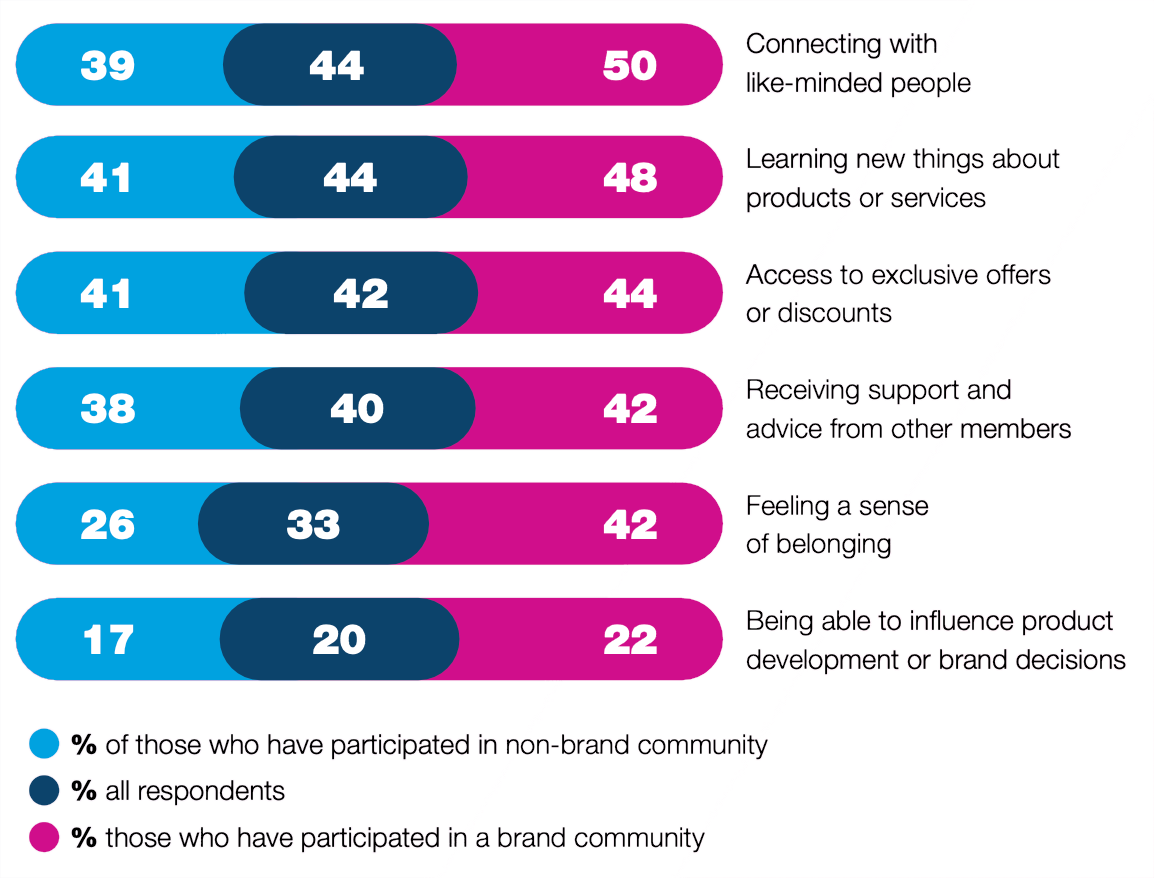
A closer look at this data reveals an intriguing pattern: brand-affiliated communities have a stronger impact on their members than non-brand related communities.
For example, individuals engaged in a brand community are much more likely to report a sense of belonging as a key benefit of community membership than those in non-brand-related groups. They’re also more likely to cite connecting with like-minded individuals as a benefit.

On top of that, members who interact with brand communities daily or more frequently are more likely to say they’ve experienced these benefits compared to those who engage only monthly or less often.
This underscores the pivotal role brands play as a cornerstone of personal perception, serving as a foundation for fostering connections among consumers. These connections, in turn, become part of the collective brand identity, creating a continuous and reinforcing cycle.
What are the most appealing benefits of participating in a fandom or community?
% of people participating in brand community:
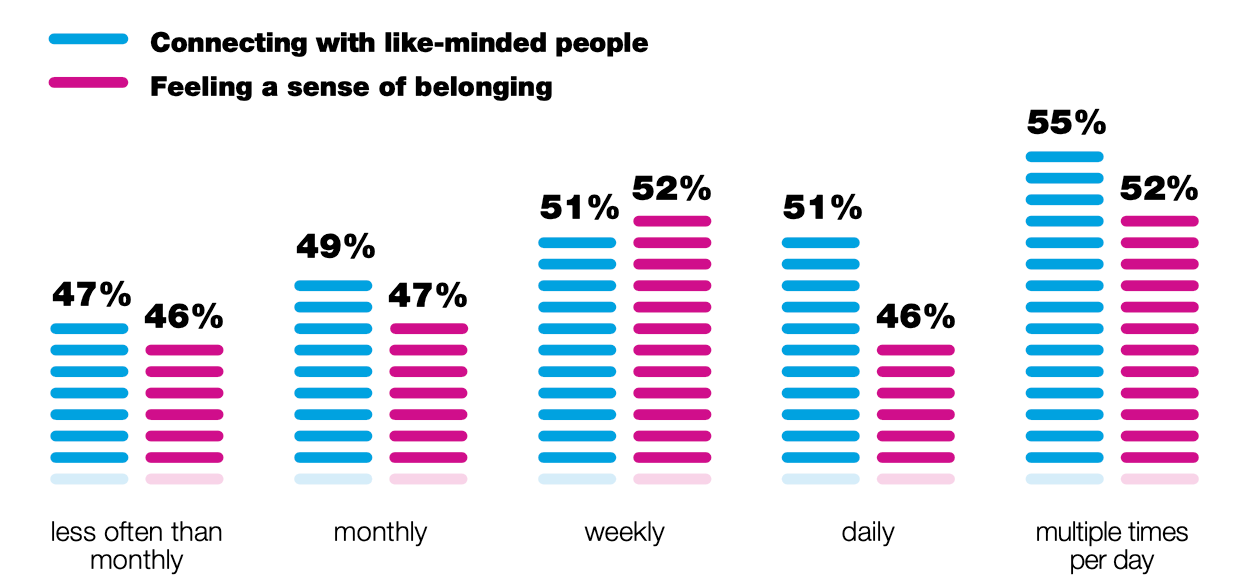
.
Communities enhance the brand experience
Brand communities are more than just social groups—they amplify the brand experience by providing a space for users to connect, share knowledge, and celebrate their enthusiasm for the product or service. These interactions foster a deeper connection to the brand and enhance the overall customer experience.
For those who are part of these communities, there’s a noticeable “halo effect” that positively influences their perception of the brand. The vast majority (86%) of the consumers that told us they do participate in brand-specific communities believe that being part of that community plays at least some role in shaping their overall experience with the brand.
Around a third (34%) say it’s an important part of that experience, with importance growing as engagement with the community increases.
What’s more, a significant 63% of consumers who have engaged with a brand community say their perception of the brand improves when the brand actively supports or interacts with its community, with this figure rising to 71% for those who engage with a brand community multiple times per day. In comparison, only 28% of those outside these communities feel the same.
How important is being part of a brand community to your overall customer experience with a brand?
% (net important). People participating in brand community:
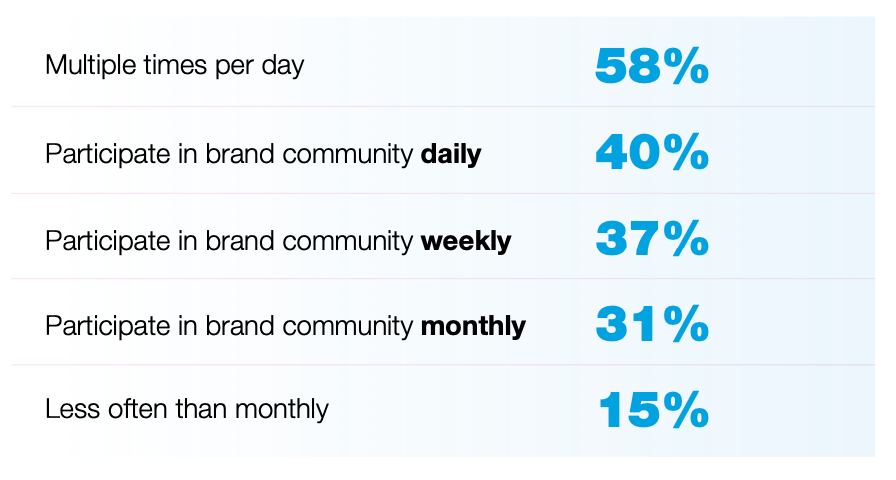
If a brand actively creates or engages with its fandom or community what impact does this have on your perception of the brand?
Those with a very positive response from participating in brand community:
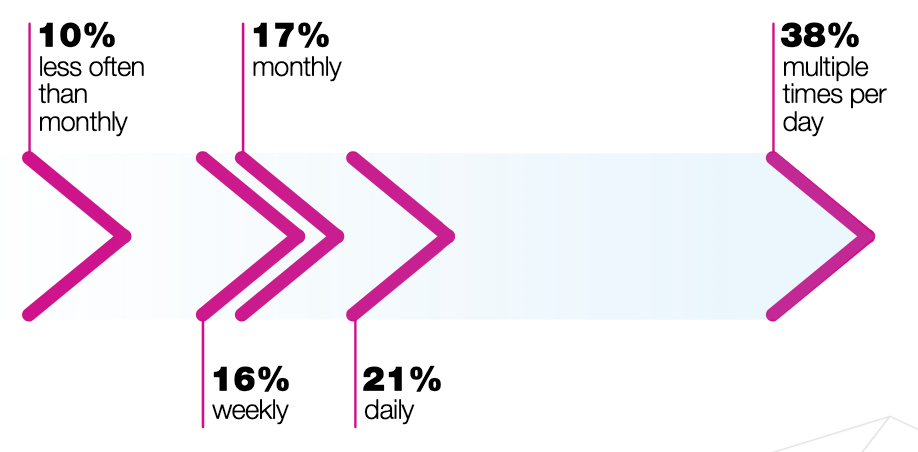

“Our stores have their own communities, and social media is a huge vehicle for us – our customers are vocal and really highly engaged. We also have a specific Facebook group for our most loyal customers and when we announce community events, they sell out instantly. We don’t have one hub for community—it spans across channels. Social media has become our mouthpiece, driving engagement and connecting with our loyal base.”
VP Marketing, Retail, UK
Communities can influence consumer decisions
The impact of communities extends far beyond brand engagement. Word-of-mouth recommendations and authentic reviews from fellow community members are powerful trust-builders.
Consumers who participate in brand communities often view reviews or testimonials from fellow members as a key source of recommendations, second only to those from close friends and family.
In fact, nearly half (42%) of brand community participants say they would take action based on a review or testimonial from a fellow brand fan or community member, compared to just 24% of those who are not part of a brand-related community.
What would make you more likely to act on a recommendation of a product or service?
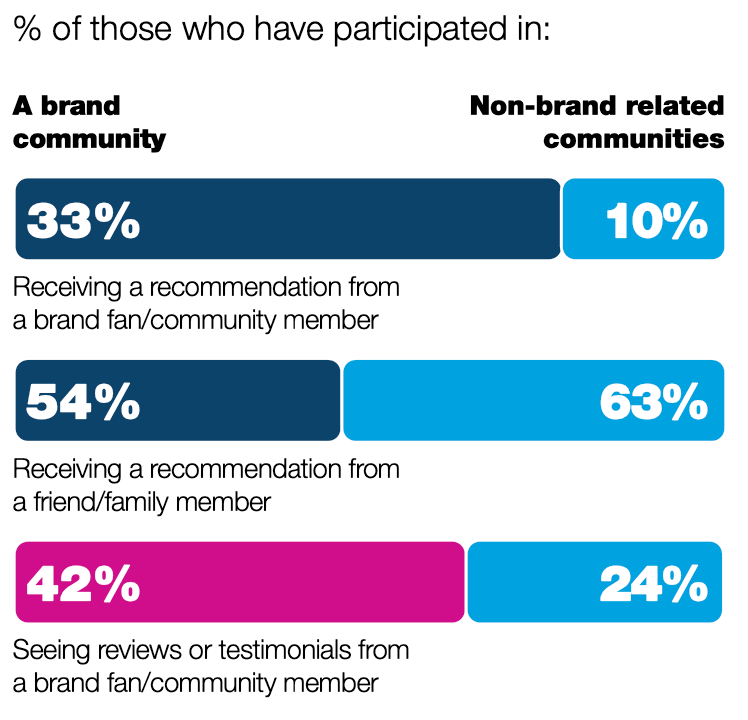
Business Perspective
Building and sustaining a community seems challenging, and businesses have work to do
Building a brand community isn’t easy—it requires thoughtful planning, significant resources, and a commitment to invest in something that may not show immediate results.
Only 37% of the brands we surveyed currently have a fandom or community. When we asked the 63% of brands that don’t have one what the barriers are to managing a fandom or community, the most cited answer is the perceived cost, followed by the ability to keep members engaged long term and to moderate responses.
The brands that do invest in communities are already enjoying some long-term rewards. When we asked the brands that have fandoms about the benefits they see, almost 40% report that engaged community members are more loyal and tend to spend more over time.
But overall, these relatively low figures indicate that brands aren’t yet making best use of their fandoms. For example, only 17% cite increased customer advocacy as a benefit. If managed effectively, these communities should turn members into passionate brand champions.
What are the barriers to managing a fandom or community?
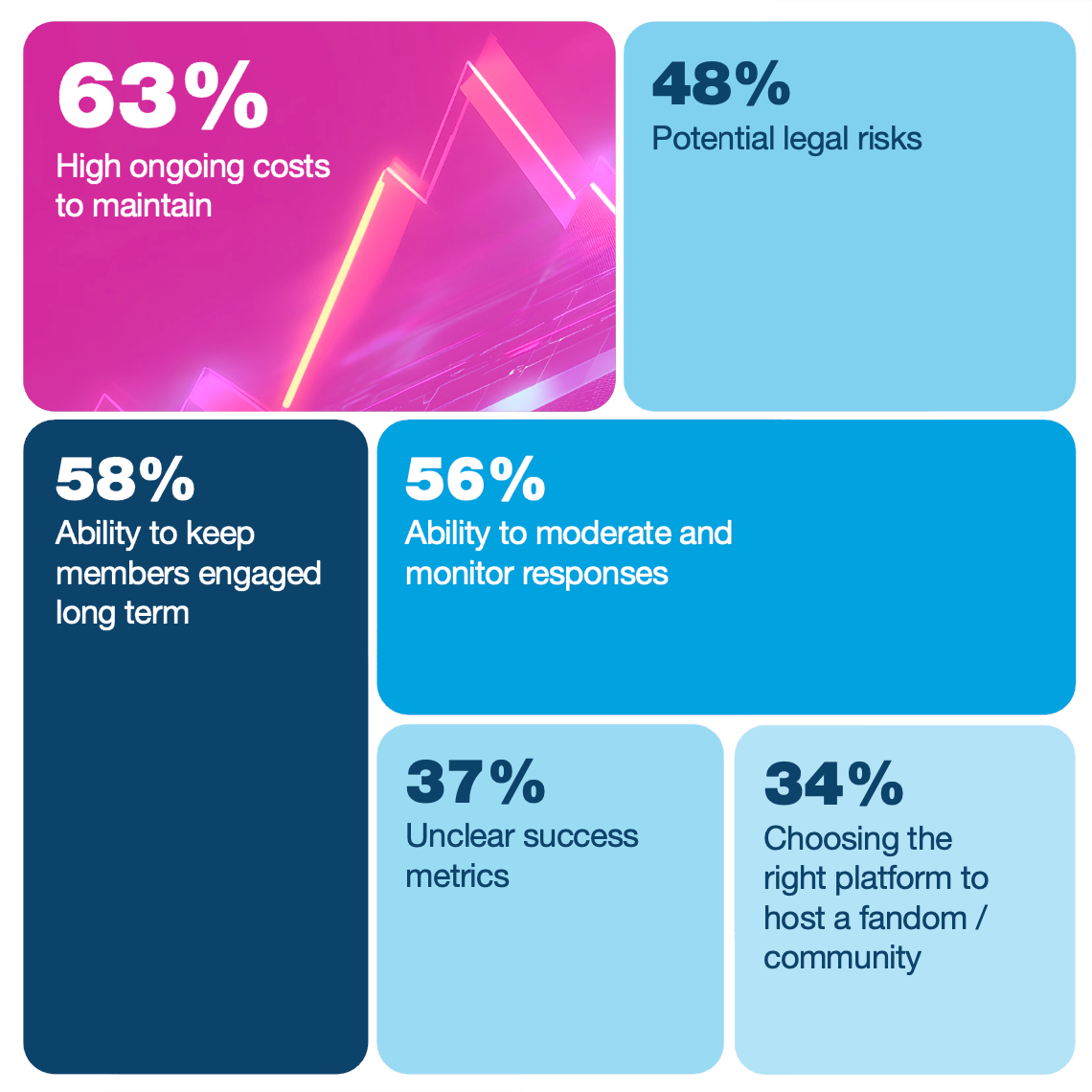

Benefits of investing in a brand community or fandom, according to those who have one
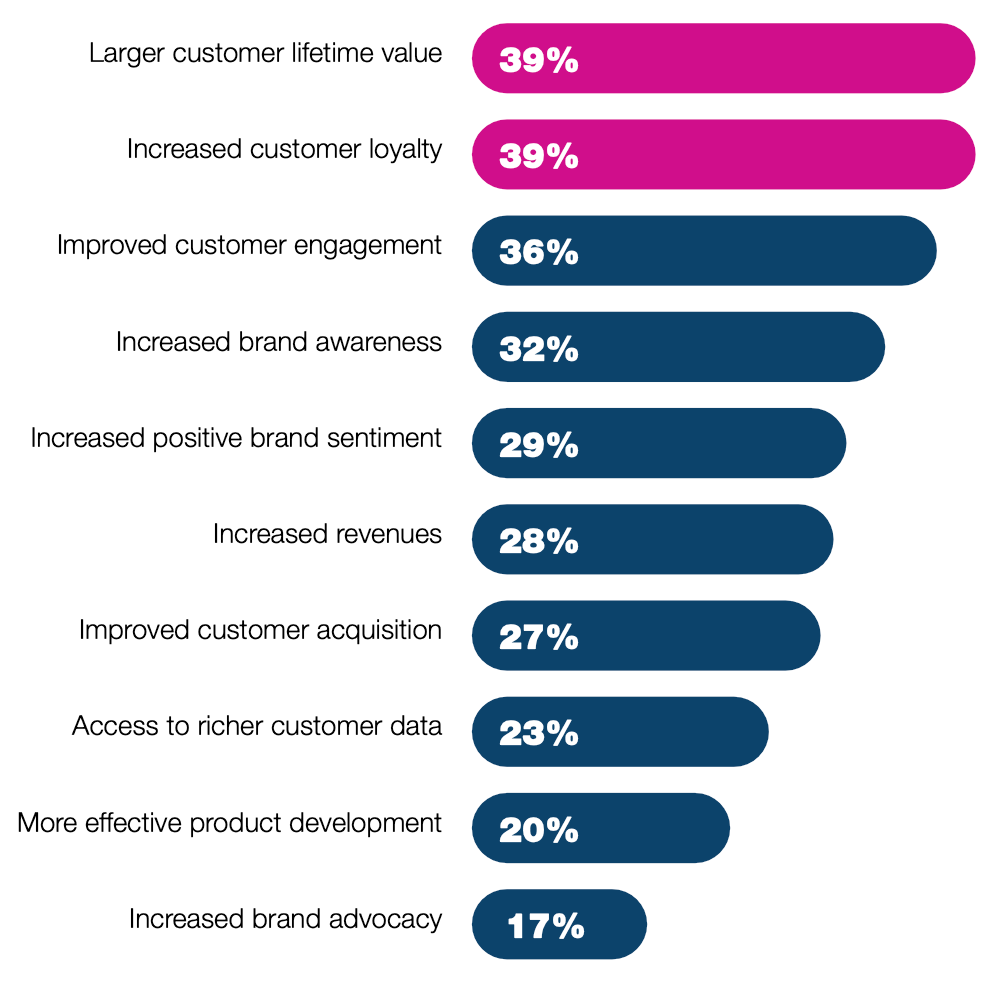
“Community has been a big area of growth for us over the last 18 months, especially in terms of investment. Our social team has grown a lot—we’ve brought it in-house, and it’s now four times bigger so we can stay on top of trends on platforms like TikTok. That’s really important, not just for reaching Gen Z, but also for some of our older customers who are active on these platforms too.”
Director Customer Marketing, Retail, UK
Communities provide valuable customer feedback and insights
Communities aren’t just for engagement— they’re also a powerful source of customer feedback. By actively listening and engaging with community members, brands can gain deep insights into their customers’ needs, preferences, and pain points. With the help of AI, brands can gather and analyze this feedback, allowing them to incorporate valuable insights directly into their product development and marketing workflows.
Despite only 23% of brands that have a fandom saying access to richer customer data is a benefit35, over three-quarters (76%) say they are already using data generated by their fandom or community to shape their marketing and customer experience strategies.
This disparity suggests that while brands are utilizing fandom-generated data, the methods they use to collect it—and the data itself—may not provide the most valuable or actionable insights. In fact, only around half (49%) are using AI to support their community strategy.
This mixed picture suggests there is significant room for improvement, and brands may need external support in how they use data, AI and other technologies to get maximum value from their fandoms and communities.
What will businesses need to build effective fandoms?
Building and managing successful communities requires a thoughtful, strategic approach, with businesses focusing on a few key areas:
Enterprise identity solutions
To truly connect with their audience, brands need a robust identity solution to unify interactions across all touchpoints—whether online via social media and email, or offline at in-store events. This enables a holistic view of each customer to support seamless, personalized engagement, and strengthen connections within the community.
Strong data management
Effective community management relies on accurate data. Brands can unify data from various sources, employ data hygiene to make sure that information is accurate and up to date, and enrich that data with insights from other trusted sources.
Advanced analytics
Using the latest AI-driven technologies, brands can analyze community behavior, spot trends, and create targeted segments for more personalized interactions. This ensures every community member feels valued, driving higher engagement.
AI-powered social listening and sentiment analysis
AI tools give brands the ability to monitor real-time conversations, uncover trending topics, and identify key influencers within the community. With AI-powered analytics they can identify specific segments within their fandom and offer them tailored experiences. Through sentiment analysis, brands can respond swiftly to feedback, adjusting their strategies to maintain meaningful and ongoing engagement.
Where Next?
The role of technology in community building is set to expand, offering new opportunities for brands to foster deeper connections. Here’s where the trend is heading:
AI and data analytics at scale
With advances in AI and data analytics, brands will have even greater power to scale community engagement. AI will enable deeper insights into customer behavior, preferences, and sentiment, allowing brands to create hyper-personalized experiences across large and diverse communities. Automation will help brands to reduce costs by managing real-time monitoring and moderation. As these tools become more advanced, brands will be able to anticipate community needs, customize content, and drive engagement more effectively. However, the human element will remain essential, as creativity, empathy, and strategic thinking will be key to ensuring AI-driven interactions feel authentic and meaningful.
The growth of micro-communities
As the digital space becomes more fragmented, brands will find new opportunities in micro-communities and niche interest groups. These smaller, focused communities offer a unique chance for brands to connect with highly targeted customer segments that might have been overlooked by broader marketing strategies. AI will be used to create bespoke experiences for these niche communities, and to moderate their interactions, which will reduce costs for brands. But people will always be required to give these communities a personal touch.
